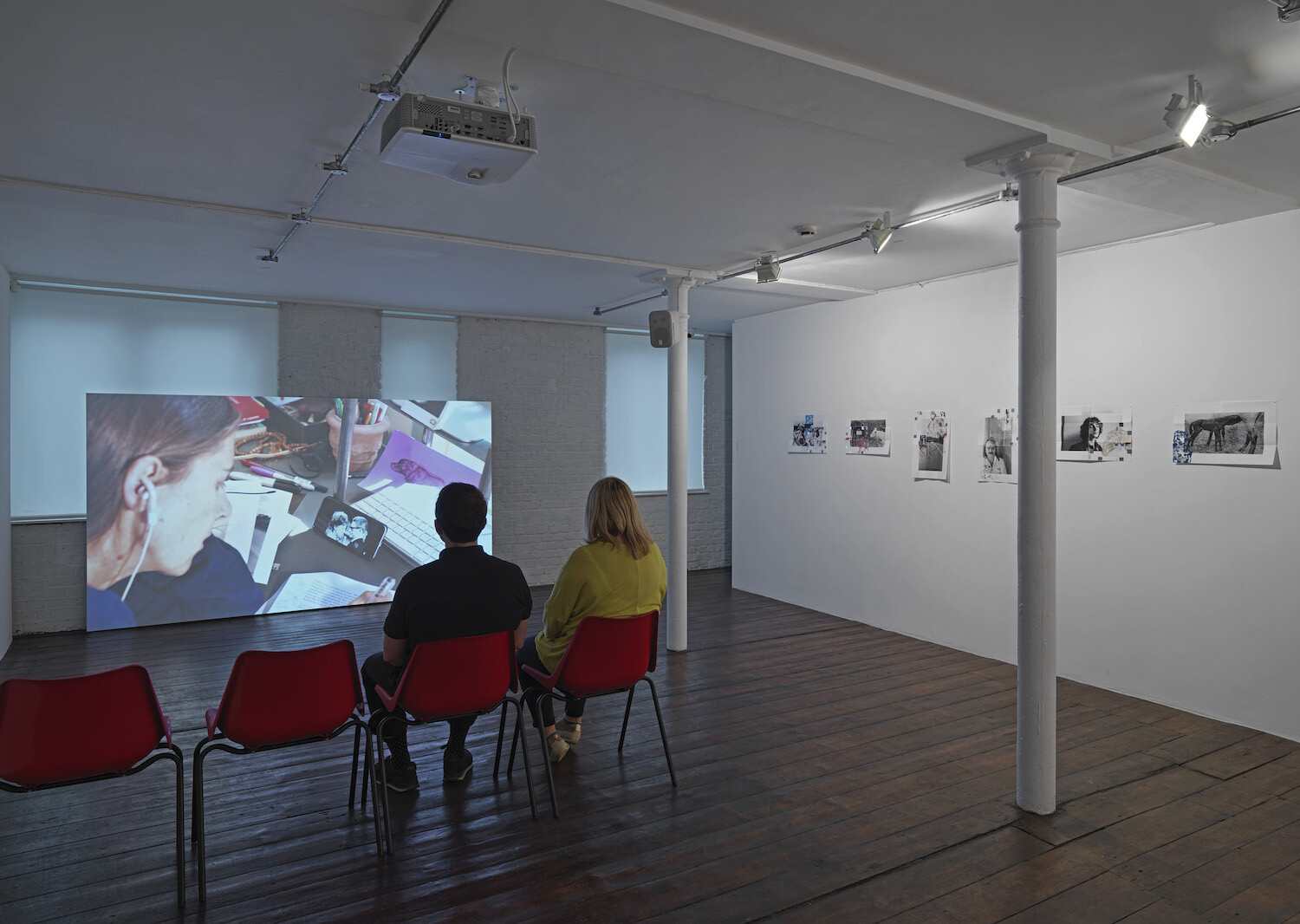Categories
Subjects
Authors
Artists
Venues
Locations
Calendar
Filter
Done
October 17, 2019 – Review
Moyra Davey’s “i confess”
Brian Dillon

Each time Moyra Davey speaks in her new film i confess (2019)—spinning a narrative that’s at once autobiographical, political, essayistic—she’s preceded briefly by a faint ghost-voice, anticipatory echo. It’s the sound of the artist’s own voice, prerecorded and playing off her iPhone as in-ear prompt, while she paces her New York studio, repeating the script aloud. Davey has used this subtly deranging method before, in films such as Les Goddesses (2011) and Hemlock Forest (2016). It gives her a halting, spacey presence on screen, as though she’s merely the conduit for personal memory, cultural-political reflections and a shelf’s-worth of citation. In the past, Davey’s films have invoked Anne Sexton, Mary Wollstonecraft, Chantal Akerman, and Derek Jarman. When we first see and hear her in i confess, which is shown alongside a series of photo-etchings, she’s thinking about James Baldwin—a famous 1965 debate with William F. Buckley Jr. plays on YouTube in the background—and about the vexed history of French-Canadian identity.
Davey was born in Toronto in 1958, and grew up in Montreal, where she felt ashamed to be an anglophone outsider, and at the same time terrified of the strictures of Québec Catholicism. Early in i confess she tells us …
June 12, 2015 – Review
Frances Stark’s “Sorry for the Wait”
Morgan Quaintance

Hard-drive art: exhibitions and discrete works as life audits, comprising the photographic and documentary contents/detritus of an artist’s hard drive or cloud-space (a collective term for an individual’s online storage facilities). Not yet a widely acknowledged post-digital subgenre, but seemingly the organizing principle behind Frances Stark’s disappointing greengrassi solo show: a neatly ordered exhibition of seven paintings, a collage, and four videos (Sony cubes placed on white plinths in a white cube) that offer a glimpse into culture clashes that take place in the eclectic world of Stark’s cloud-space.
Formally, “Sorry for the Wait” is arranged according to the binary logic of color contrasts, two-tone to be specific. Black ink on white paper is used in the paintings, each with a variation on one form: a signpost composed of three lines and either the word stupid or clever written above it. The form is abstracted in Moment in Clever/Stupid Revolution (2015), rendered positively and negatively against a black or white background in others, and in Stupid Moment in Clever/Stupid Revolution Repurposed (2015) and Clever Moment in Clever/Stupid Revolution Repurposed (2015) it is placed on a black and white checkerboard floor. Echoed by the four black-gray monitors placed against white walls, this …
November 6, 2011 – Review
Moyra Davey’s "Les Goddesses"
Gareth Bell-Jones

Black-and-white images of young androgynous women illustrate the introduction to Moyra Davey’s video Les Goddesses (2011). Wearing tight white t-shirts and cropped black hair, they stare directly into the lens. Davey speaks over the images in monotone, and introduces the female lead of the film, the protofeminist philosopher Mary Wollstonecraft, as well as her children and her lovers. Various shots of the same four figures, together or paired in front of a white colorama, individually on turf, against a brick wall: the characters Davey tells us of become the young women that we see.
Davey’s new video is just over an hour long and is served in chapters. Title screens herald each section and footage alternates from close detail of photographs and books, static shots of Davey’s loft apartment, and shots from her windows. It’s unclear if she has just moved to the place. The apartment feels like a lonely Sunday afternoon. Quiet and contemplative, melancholic even. Bookshelves are half empty and frames packed in bubble-wrap.
Davey paces the apartment carrying a handheld recorder. One white headphone is held to her ear, the other lies dangling. She is determined and concentrated as she speaks, making sure she follows the recording. Unpaid …
